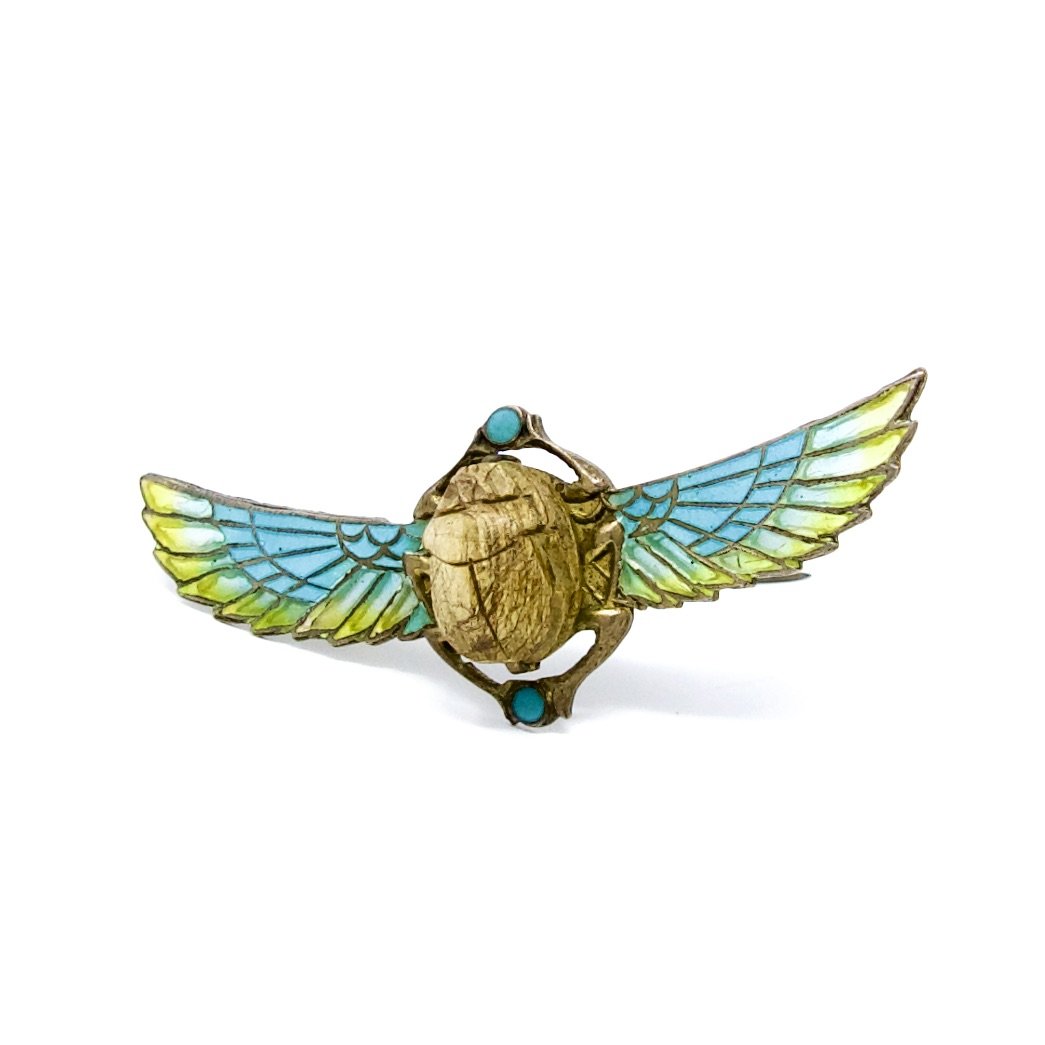 Image 1 of 4
Image 1 of 4

 Image 2 of 4
Image 2 of 4

 Image 3 of 4
Image 3 of 4

 Image 4 of 4
Image 4 of 4





Egyptian Revival Plique-À-Jour Scarab Brooch
During the late 19th and early 20th centuries there were large amounts of archeological discoveries and innovations that had a great impact in the world of design. The discovery of Etruscan jewelry drove english silver and goldsmiths to execute precise replicas of two thousand year old bangles and earrings, and the discovery of King tut’s tomb in 1922 drove designers to copy Egyptian designs. This pin was made to embody the luxurious and mysterious beauty found in ancient Egyptian design.
The scarab iwings are made of gilt sterling silver and plique-à-jour enamel, one of the most painstaking enameling methods. The cells in the wings are filled with enamel, and fired several times to create a stained glass effect. At the end of the enameling process, a temporary backing is taken off . The scarab is made of carved limestone. This brooch could also be reworked into a stunning necklace!
c. 1910
2.5” x 1”
During the late 19th and early 20th centuries there were large amounts of archeological discoveries and innovations that had a great impact in the world of design. The discovery of Etruscan jewelry drove english silver and goldsmiths to execute precise replicas of two thousand year old bangles and earrings, and the discovery of King tut’s tomb in 1922 drove designers to copy Egyptian designs. This pin was made to embody the luxurious and mysterious beauty found in ancient Egyptian design.
The scarab iwings are made of gilt sterling silver and plique-à-jour enamel, one of the most painstaking enameling methods. The cells in the wings are filled with enamel, and fired several times to create a stained glass effect. At the end of the enameling process, a temporary backing is taken off . The scarab is made of carved limestone. This brooch could also be reworked into a stunning necklace!
c. 1910
2.5” x 1”
During the late 19th and early 20th centuries there were large amounts of archeological discoveries and innovations that had a great impact in the world of design. The discovery of Etruscan jewelry drove english silver and goldsmiths to execute precise replicas of two thousand year old bangles and earrings, and the discovery of King tut’s tomb in 1922 drove designers to copy Egyptian designs. This pin was made to embody the luxurious and mysterious beauty found in ancient Egyptian design.
The scarab iwings are made of gilt sterling silver and plique-à-jour enamel, one of the most painstaking enameling methods. The cells in the wings are filled with enamel, and fired several times to create a stained glass effect. At the end of the enameling process, a temporary backing is taken off . The scarab is made of carved limestone. This brooch could also be reworked into a stunning necklace!
c. 1910
2.5” x 1”

